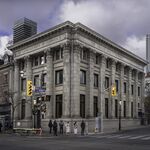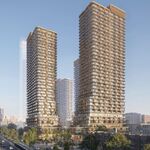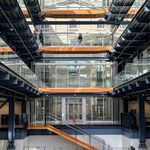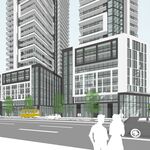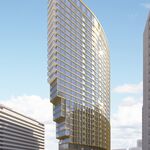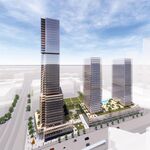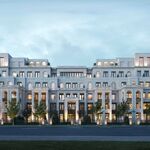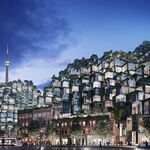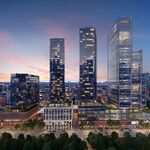Following on our earlier story today, more timber construction is destined for Toronto. In the Fall of 2017, George Brown College launched an international design competition for the third phase of their Waterfront Campus near Jarvis and Queens Quay. The competition sought designs for an all-wood, 12-storey building to be known as The Arbour, set to house George Brown’s School of Information Computer Technology, a Tall Wood Research Institute, and a childcare facility. The winning design from the team of Toronto's Moriyama & Teshima and Vancouver's Acton Ostry Architects was announced in April.
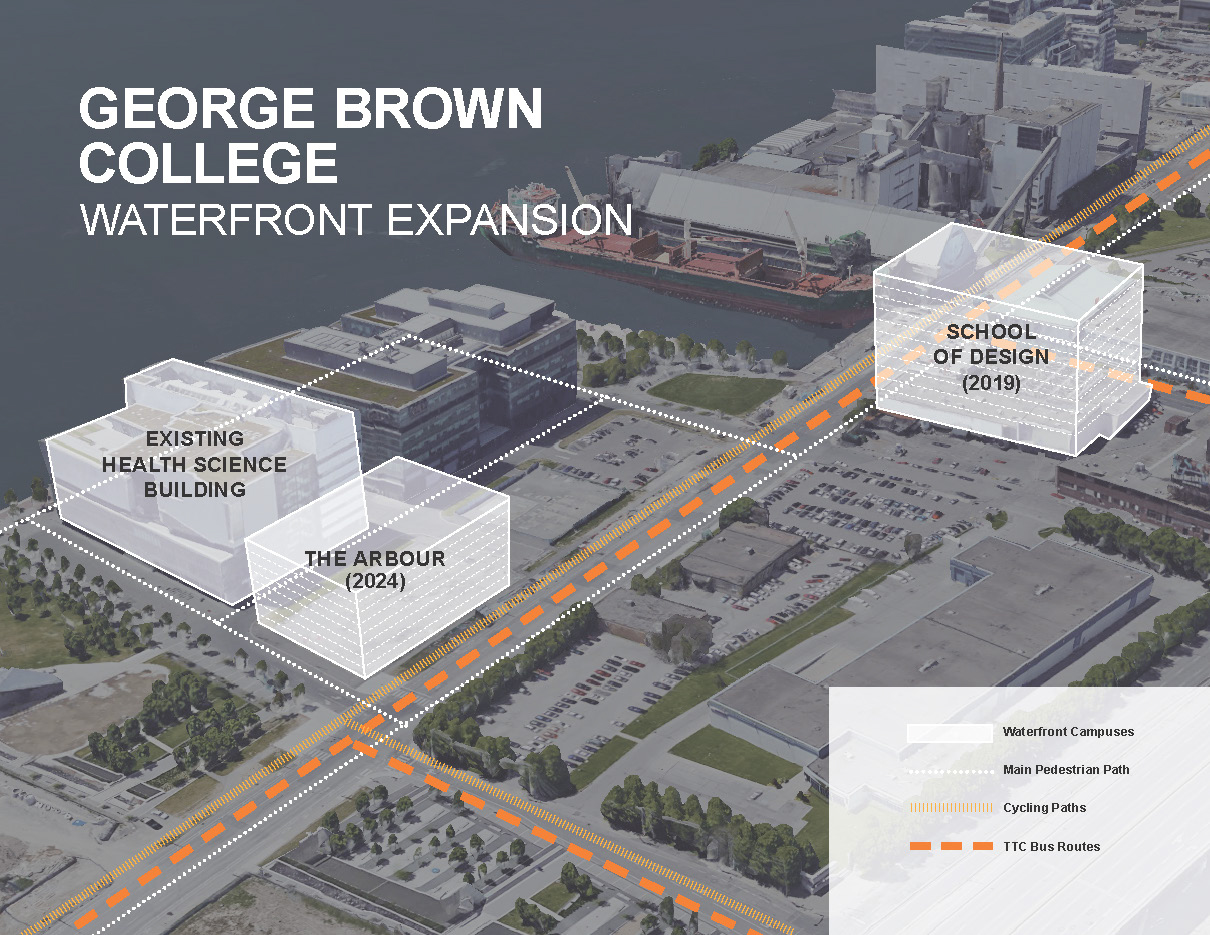 Location of The Arbour, image via Waterfront DRP
Location of The Arbour, image via Waterfront DRP
In the months since, planning for the project has been progressing. Most recently, the project was presented for a second time before Waterfront Toronto's Design Review Panel (DRP). The panel considered specific elements of the design including the Arbour's relationship with surrounding buildings, ground floor porosity and public realm engagement, the positioning of a proposed daycare in relation to service entrances on Knapp Lane, and the form of the building's upper levels massing.
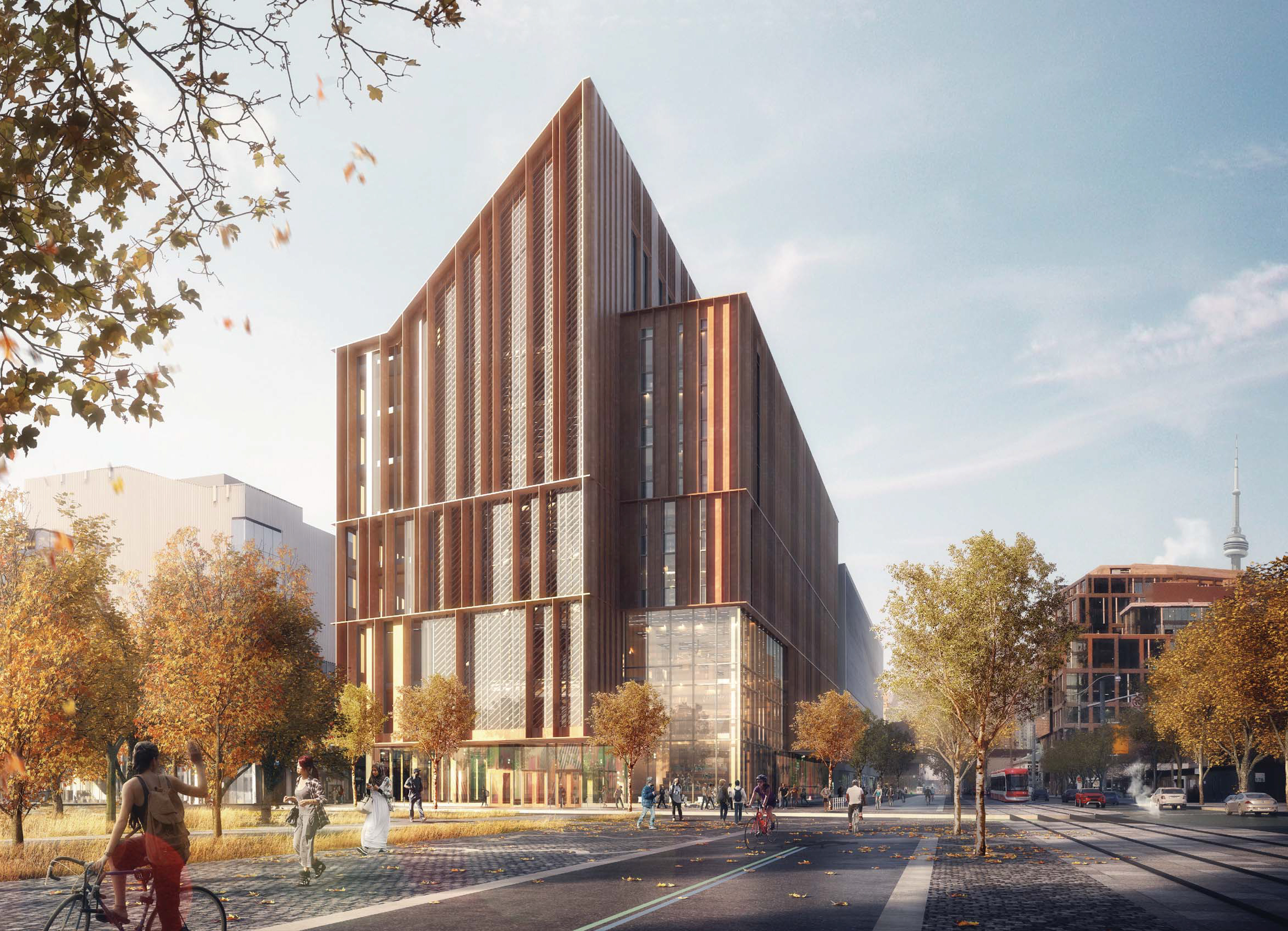 Looking west to The Arbour, image via Waterfront DRP
Looking west to The Arbour, image via Waterfront DRP
At the same time, the presentation document offered more design details of the new institutional facility than we had seen before. The 16,680 m2 building reaches a height of 52.5 metres measured to the top of the mechanical penthouse level, clad in a mix of wood, metal panels, vision glass, spandrel glass, and unitized curtainwall cladding. The angled roof is topped in photovoltaic panels, while ventilation for the building's innovative solar chimney is clad in mechanical louvres.
The CLT structural system is also clearly shown in a diagram, consisting of 2400 wide x 315 thick CLT slab bands, 1200 x 400 CLT "wallumns", and 2400 wide x 215 thick CLT infill panels, (all units in millimetres) supporting a raised concrete floor system atop a cushioning pad. The Arbour's ground floor is designed as a concrete pedestal, supporting the wood construction above.
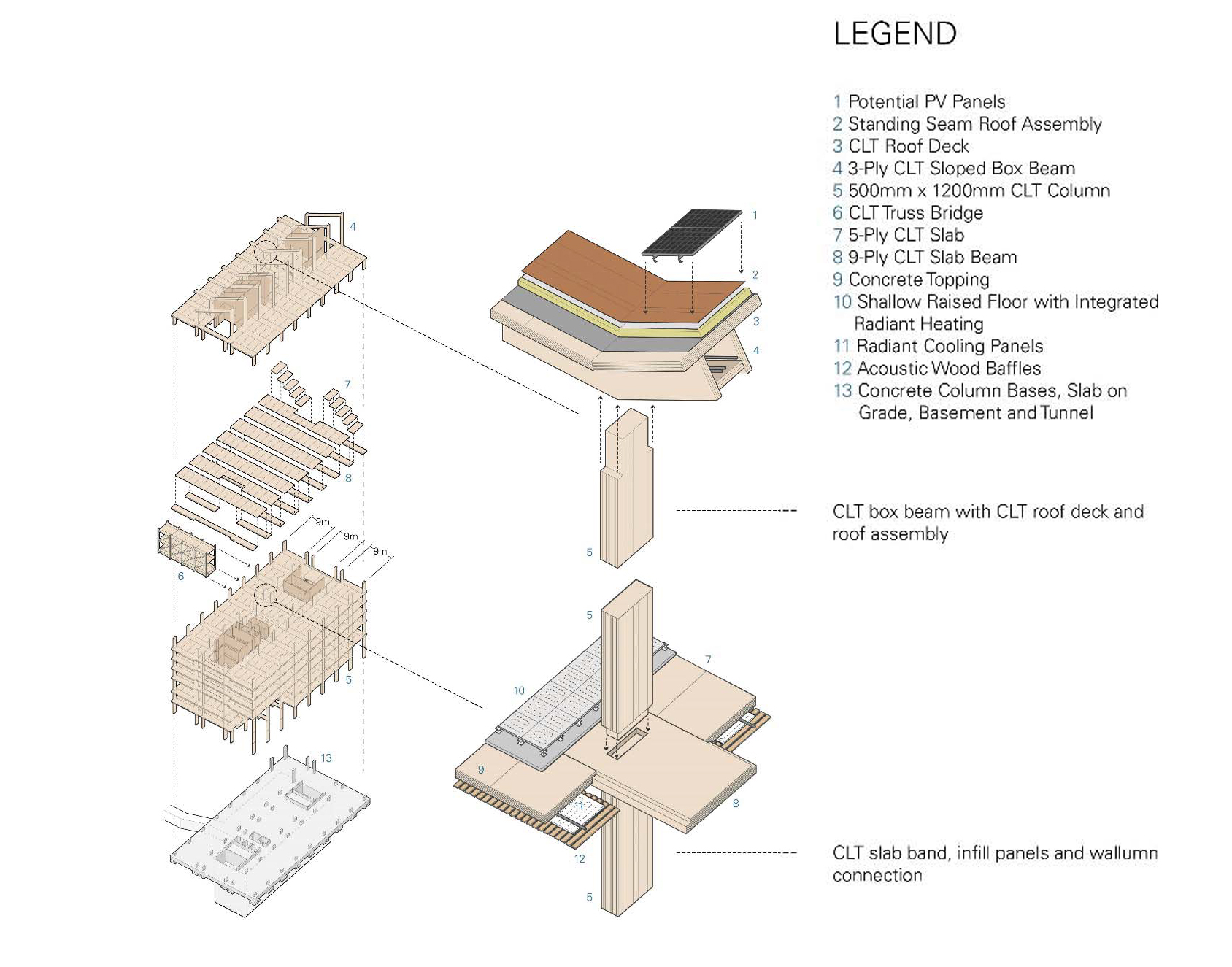 Structural system at The Arbour, image via Waterfront DRP
Structural system at The Arbour, image via Waterfront DRP
A large two-storey bridge connects The Arbour with the existing Daphne Cockwell Building to the south. Keeping in spirit with the all-wood plan, the bridge would be constructed with CLT-built trusses, and enclosed with glazing. In addition, the two buildings are connected by a tunnel, with the existing building’s underground garage to serve parking and bicycle requirements for the whole site.
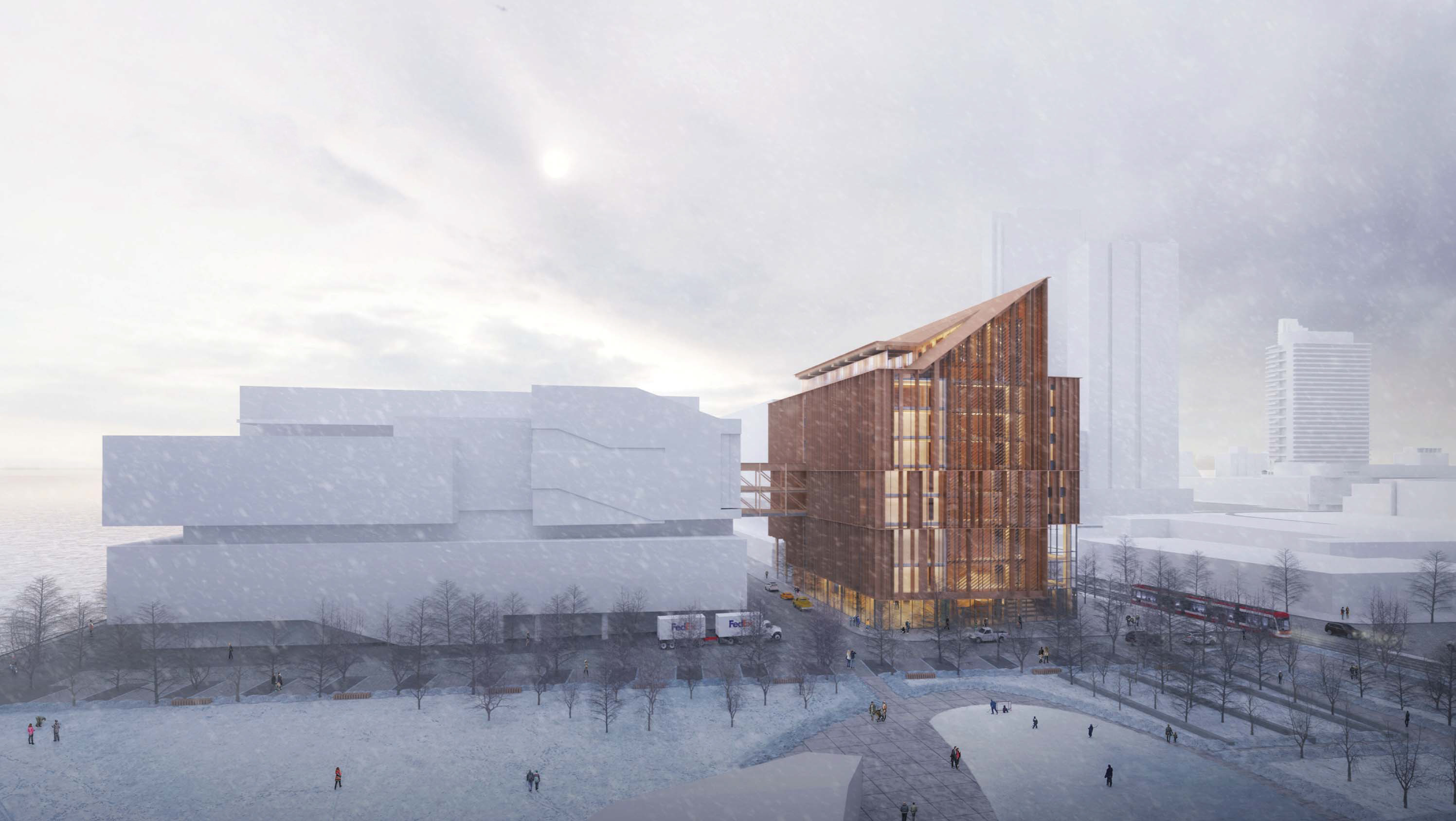 Looking west to The Arbour, image via Waterfront DRP
Looking west to The Arbour, image via Waterfront DRP
A series of cross-sections in the document detail how the various areas of the building will be used, showing off photorealistic details of the wood interior and exterior finishes that promise to make this project unique.
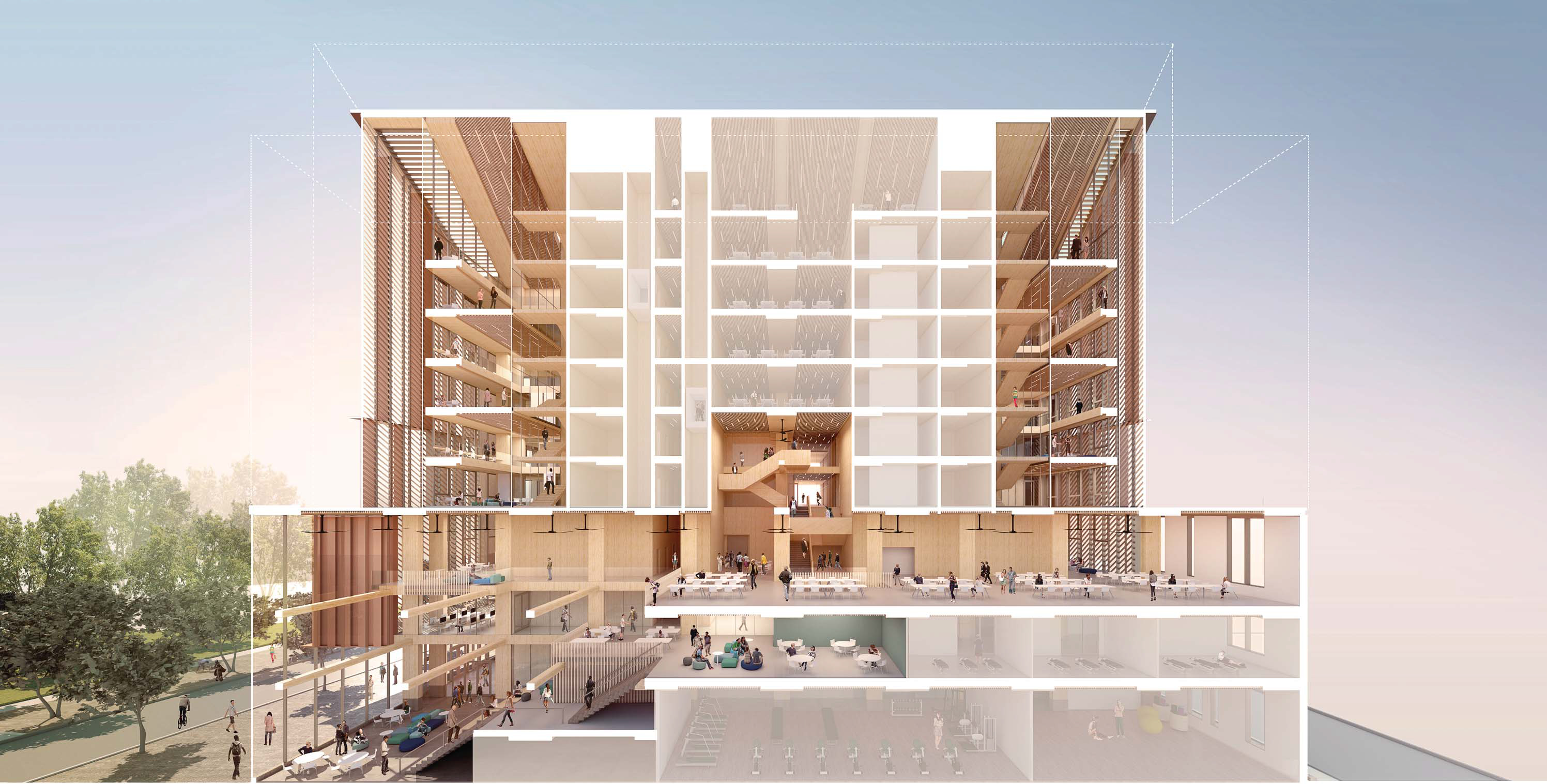 Cross-section of The Arbour, image via Waterfront DRP
Cross-section of The Arbour, image via Waterfront DRP
A major hurdle in the planning process still to overcome will be obtaining a site-specific amendment to the Ontario Building Code's six-storey height cap on all-wood buildings. Construction of the project is targeted to begin in 2021, with the building pegged for a 2024 completion date.
 Interior of The Arbour, image via Waterfront DRP
Interior of The Arbour, image via Waterfront DRP
Additional information and images can be found in our database file for the project, linked below. Want to get involved in the discussion? Check out the associated Forum threads, or leave a comment in the field provided at the bottom of this page.
| Related Companies: | LiveRoof Ontario Inc, Peter McCann Architectural Models Inc., RWDI Climate and Performance Engineering, STUDIO tla, Walters Group |

 5.5K
5.5K 




















